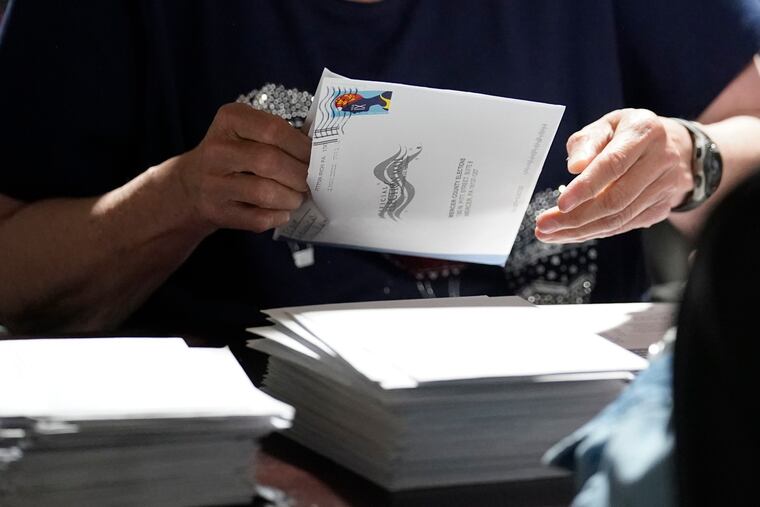Why we won’t have all the results on election night
It will likely take several days for an accurate count of next month's ballots, but that does not mean anything nefarious is occurring.

On Nov. 8, millions of Pennsylvanians will go to the polls to cast their ballots in the midterm election. In addition, the more than 1.3 million Pennsylvanians who applied to vote by mail-in or absentee ballot must return their ballots to their county election office by 8 p.m. that day.
The question I am asked over and over is: When will we have the results? It’s a fair question.
We will all be eager to know the outcome of such an important election. Voters will select our next governor and lieutenant governor, one of our U.S. senators, all of our U.S. Congress members, half of our state senators, and all of our state representatives.
But the answer I must give may not be the one people want to hear. While we would all like to go to bed on Election Night knowing who won in every race, it will likely take a few days for complete unofficial results.
An accurate count is paramount and cannot be rushed. County election workers must be given a reasonable amount of time to do their jobs and follow the law.
An accurate count is paramount and cannot be rushed.
That short interval of time does not mean anything nefarious is occurring; rather, it simply demonstrates that the careful, deliberative process and timeline prescribed by Pennsylvania’s Election Code is at work to achieve a thorough count of every eligible vote.
It takes time to count more than 1.3 million mail ballots. And current election law does not permit counties to begin pre-canvassing these ballots until 7 a.m. Election Day. That means county election officials cannot remove the ballots from the envelopes and prepare them to be scanned until that time — a day when those same officials are also running the more than 9,000 polling places across the state.
And then, under the Election Code, counties may not even begin to record and publish mail ballot results until after the polls close at 8 p.m. Election Day.
Even after votes are recorded and published, county canvass boards continue elections work. Those boards must meet no later than 9 a.m. on the Friday after the election (Nov. 11 for this election) and must continue canvassing and counting through the eighth day after the election (Nov. 16).
Among other work, these boards adjudicate provisional ballots — ballots cast when it’s unclear if the voter is in the correct polling place or when a voter who applied for a mail ballot decides to vote in person instead but doesn’t have the mail ballot to surrender.
The canvass also includes counting military and overseas civilian ballots, which counties must accept up to seven days after the election (by 5 p.m. Nov. 15).
Finally, absentee voters whose identification could not be verified at the time they applied have until the Monday after the election (Nov. 14) to provide their county election office with proof of identification.
If there are close races, which we’ve seen more of in recent elections, every vote must be counted before the outcome can be known.
It’s important to note that at every step of the process — in-person voting at the polls, pre-canvassing and canvassing of mail ballots, and adjudication of provisional ballots — representatives selected by each candidate and political party may be present and observe.
Voters, candidates, and the media need to be patient as the counting process unfolds. And they need to be savvy consumers of election information.
Dishonest sources who want to sow discord and doubt and create chaos sometimes use normal, expected processing times for election results to spread misinformation and disinformation about the integrity of the election.
Don’t share election information unless you know it’s from a reliable, trusted source, such as your county election office website and the Pennsylvania Department of State’s voter information website, vote.pa.gov.
The security of our electoral system is protected by many safeguards. We can trust in the integrity and professionalism of the local election officials who are doing the counting.
Please vote on Nov. 8 if you haven’t already cast a ballot by mail. Let your voice be heard. Our democracy works best when we all participate.
Leigh M. Chapman is Pennsylvania’s acting secretary of the commonwealth.